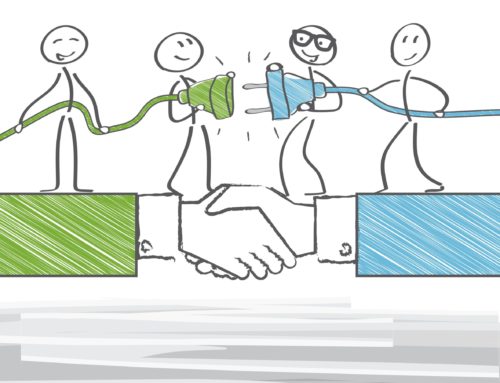Lessons from the Connecticut Foodshare Merger
In part 1 of our series, we explored the factors and timing nonprofits should consider when thinking about a potential merger. Last month, we explored what happens once a nonprofit is ready to roll up its sleeves and do the work needed for a merger or alliance with another.
In this final and third installment, we explore what happens when two nonprofits cross the finish line and the merger has been approved. Think the process is done? Not a chance. This is when the real work begins!
The most important next step post-merger is to have a solid implementation plan in place. A good plan will look to integrate the two entities by with some, if not all, of the following:
- Governance – New bylaws that integrate and outline the new entity’s board structure and decision-making processes.
- Staffing & Retention – Creation of a new organizational structure that places the right people in the right positions. Not everyone may stay with the new entity despite the best of intentions.
- Programming – The bringing together of the two organization’s programs and services to maximize impact – perhaps as a way of reaching more audiences and/or saving money.
- Systems – Information technology, policies and procedures, software integration,
- Culture – You will be bringing together many tribes – different people, working in different ways, converging on common goals. Working intentionally to ground the team around a common set of values goes a long way in building a culture that is new and shared by all.
- Communications – A well-crafted communication plan is critical throughout the merger process, but importantly during integration as the news is shared widely with the public and with donors.
In 2020, The Strategy Group was hired to facilitate merger discussions between Connecticut Food Bank and Foodshare, and to help map out what a new organization could look like. The process came down to listening, learning, visioning, deciding, and moving forward. Over and over again. The result – in January 2021, Connecticut Foodshare was born, and has been thriving every since.
Being a partner in the success of the Connecticut Foodshare merger has given TSG the unique opportunity to share with other nonprofits key insights and experience about nonprofit mergers. Some key learnings and important takeaways from the merger:
Leadership (both staff and board) is key. Clarifying the “why” you merging should aligned board and staff around the vision. Without alignment, precious time and energy will be expended to establish alignment with each partner organization. In the case of the Connecticut Foodshare merger, it was clear from the onset that the goal was to increase impact in addressing food insecurity throughout the State of Connecticut.
Culture is key. It is easy to focus on policies and procedures when combining two organizations but culture should be a first priority. Culture integration requires intentional thought, tools, and work so as to not fall into the “us” vs. “them” trap. One of the first things President and CEO Jason Jakubowski post-merger was assemble a team of eight employees from both organizations to create the new mission, vision, and values.
Don’t hide the hard stuff. Communication is so important. Mergers are emotional and fraught with a lot of feelings. The more that can be shared early and often, the easier the process will be.
Get lawyers involved early. Documentation (for your financials, audit, is a big part of the merger and having legal counsel ready and available for each check point will prove invaluable for keeping the process on track. Connecticut Foodshare felt the one thing they might do over is to engage lawyers earlier.
People will opt out. There will be those who are comfortable with innovation and change, and those who are unable to move forward when the new organization emerges. It’s OK to “bless and release” board members and staff who might be holding the team back. Connecticut Foodshare saw some staff members not want to make the commute to the new location, and one or two board members resign. In many ways, this made the organization stronger.
Walk through the pain. The process is hard and often includes loss and grief. Allow yourself to experience the highs and the lows as they come. In the case of Connecticut Foodshare merger, working to align around a singular strategic mission was hard and what was key to success was that each nonprofit stayed dedicated to the process. It was at times frustrating, and egos had to be checked at the door.
Mergers cost money. While mergers may save money down the line (for example, having one CEO rather than two, combining back-office functions, streamlining insurance plans, and more), there are many upfront expenses to be factored in. Click here to see a sample of the costs from the Connecticut Foodshare merger.
Trust matters. Take the time to get to know each other. Be willing to explore options and see potential in the possibility. When lower levels of trust exist, engaging an outside consultant can be very valuable to help the organizations build the trust necessary to continue partnership discussions.
If your organization is considering a nonprofit merger, we’d love to discuss the possibilities with you. Please reach out and set up a discovery call now.








